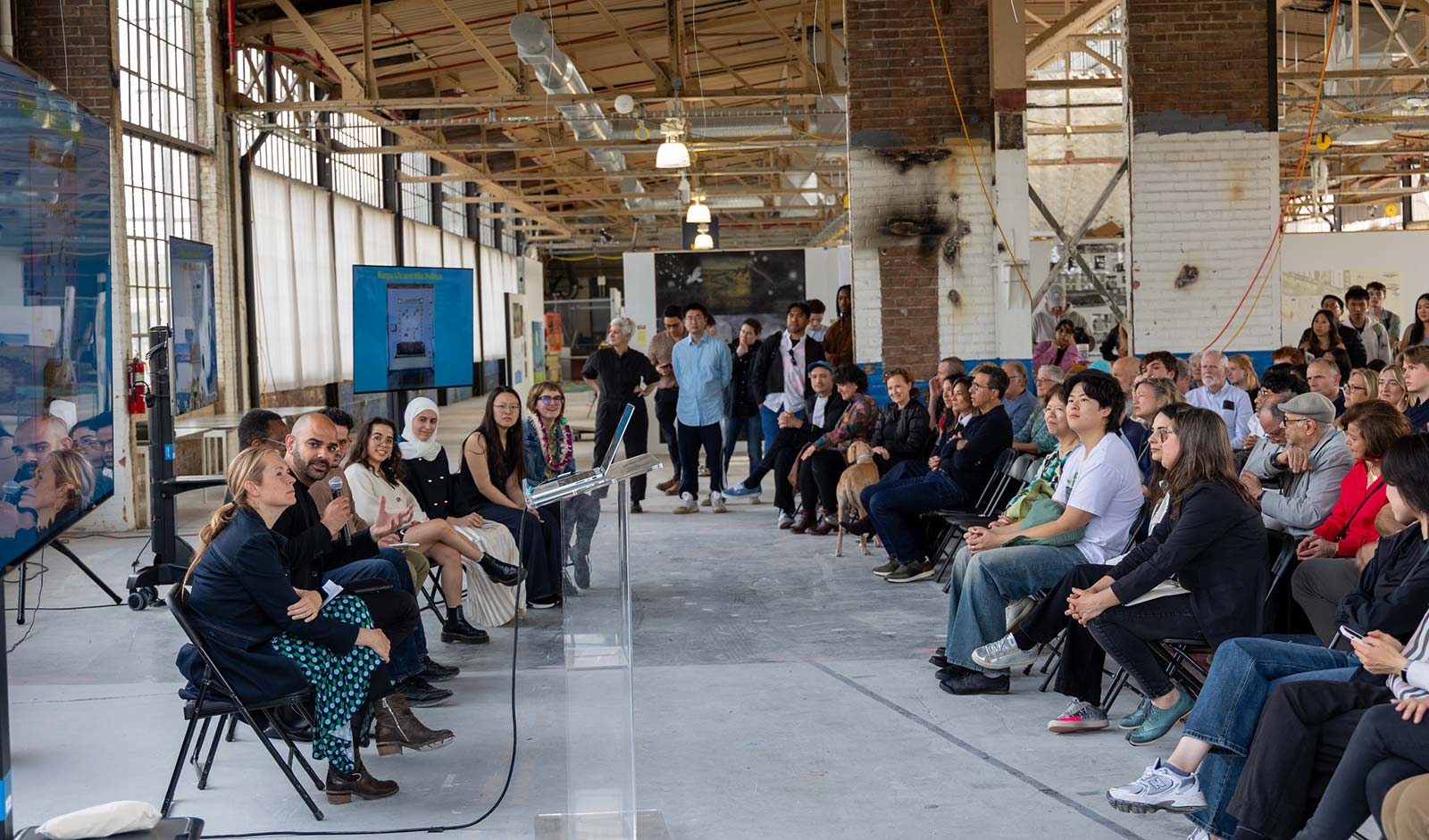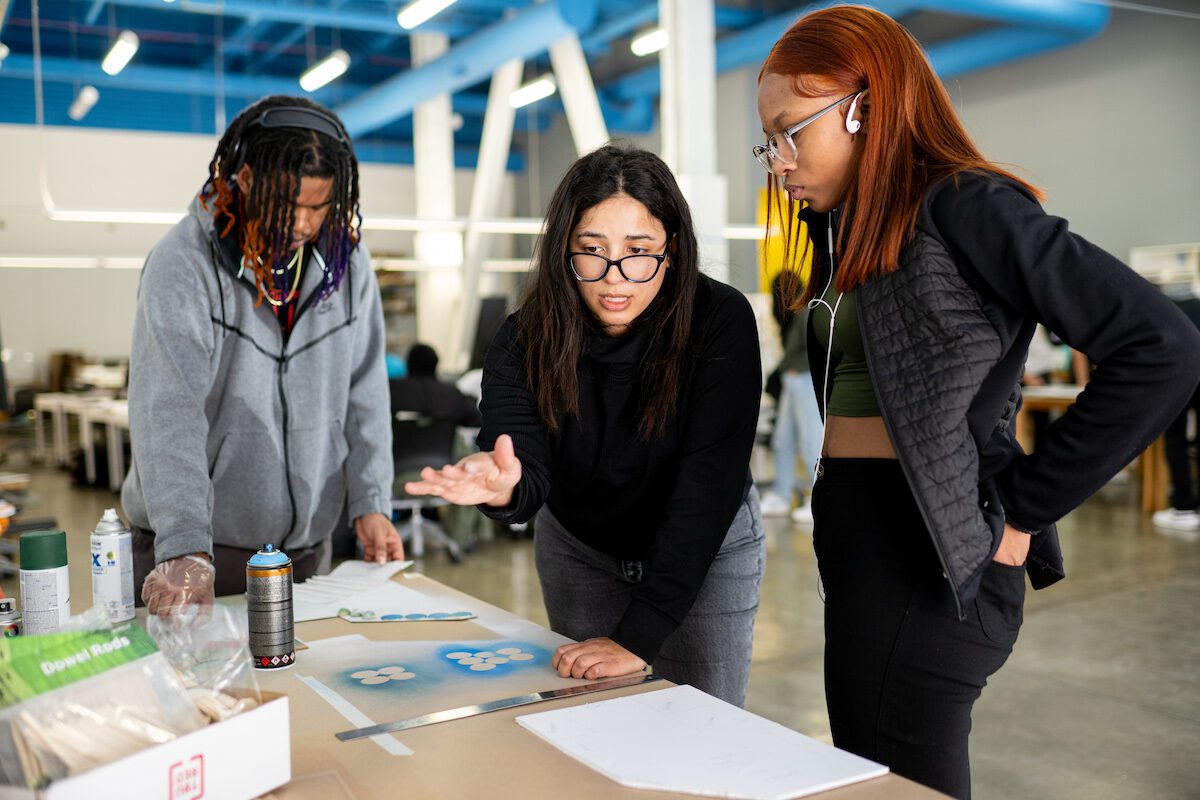
ArcPrep: Detroit High School Students Survey the Expansiveness of Architecture
Joshua Powell, a recent University of Michigan dual master’s graduate in architecture and urban planning who took part in the first ArcPrep course seven years ago, plans to start a firm with his twin brother someday.
But first, he joined the Quinn Evans architecture firm in Detroit this summer.
“ArcPrep played a big part in establishing that dream and helping it come to fruition,” Powell said. “It’s pivotal for opening doors for students and helping you understand how to design.”
ArcPrep is a collaboration between the U-M Taubman College of Architecture and Urban Planning and Detroit Public Schools Community District that expands opportunities for high school juniors who want to learn about opportunities in the architecture field. It also connects students with architects and designers throughout the city. It’s funded by the Michigan-Mellon Project.
“If you can’t see it, you can’t be it,” said Torri Smith, co-director of ArcPrep and a lecturer at Taubman College. “I think that drives a lot of the work we do.”

Established in 2015, ArcPrep transforms architectural education for roughly 60 Detroit-based high school juniors each year. Nearly 500 students have gone through the program so far.
“ArcPrep is intended to create empowering and experimental learning environments where young, emergent designers are treated as experts in the context of their cities and neighborhoods,” said Anya Sirota, associate dean of academic initiatives at Taubman College.
“In this way, ArcPrep not only teaches about architecture, it offers a portal for our college’s students into Detroit communities, helping students share and understand what is at stake, and how transformation can be guided in the most equitable way by the design disciplines.”
Statistically, 2% of licensed architects in the United States are African American and fewer are Latino, Sirota said.
“You ask who is going to build this city and for whom. It’s about diversifying our discipline,” she said. “It’s also a way to give back and participate in the construction of a more equitable city.”
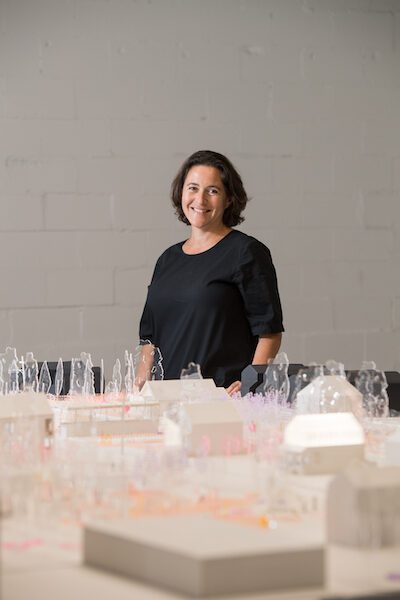
STUDIO TOUR
On a recent rainy morning in Detroit, 12 Cass Technical High School students made their way from Woodward Avenue to the North End via the QLine and a two-mile walk to tour Detroit native and artist Scott Hocking’s studio and junkyard. Hocking has been creating sculptures and photography projects in Detroit for more than 25 years. He draws inspiration from found objects, industrial castoffs and wasted materials.
The half-day trip fulfills two important goals of the four-month-long program—professional practice (exposing students to myriad professional pathways available) and building society (the reimagination of public spaces, with the understanding that designers inflect dynamic social conditions within building walls and beyond).
Whether or not students are interested in architecture, ArcPrep teaches critical skills, including design, project management, technological and software proficiency, problem solving, communication and visualization. Students are developing the necessary technical proficiencies to complete a sophisticated final project.
“My plans for college … I want to do architecture. I’m pretty inclined to do it now, and if not architecture, I would want to go into the creative design space,” said ArcPrep student Royshawn Tye-Horn.
“The concepts that we use in ArcPrep can be applied to other fields. I’ve been leaning toward graphic design because we work with a lot of software like Photoshop, and going to these visits I’ve seen so many different parts of the architecture firms. But now the class feels like there will be some urban planners, there will be some fashion designers, maybe some true architects, maybe some team leaders. It showed me that it’s so diverse in the architecture field.”
The program runs five days a week at the Michigan Research Studio in downtown Detroit, a block away from the U-M Detroit Center. The program takes DPSCD students through five modules a semester. Each module—tool box; food, culture and access; institutions and civil liberties; technology and the city; final project—is meant to show students opportunities of the practice.
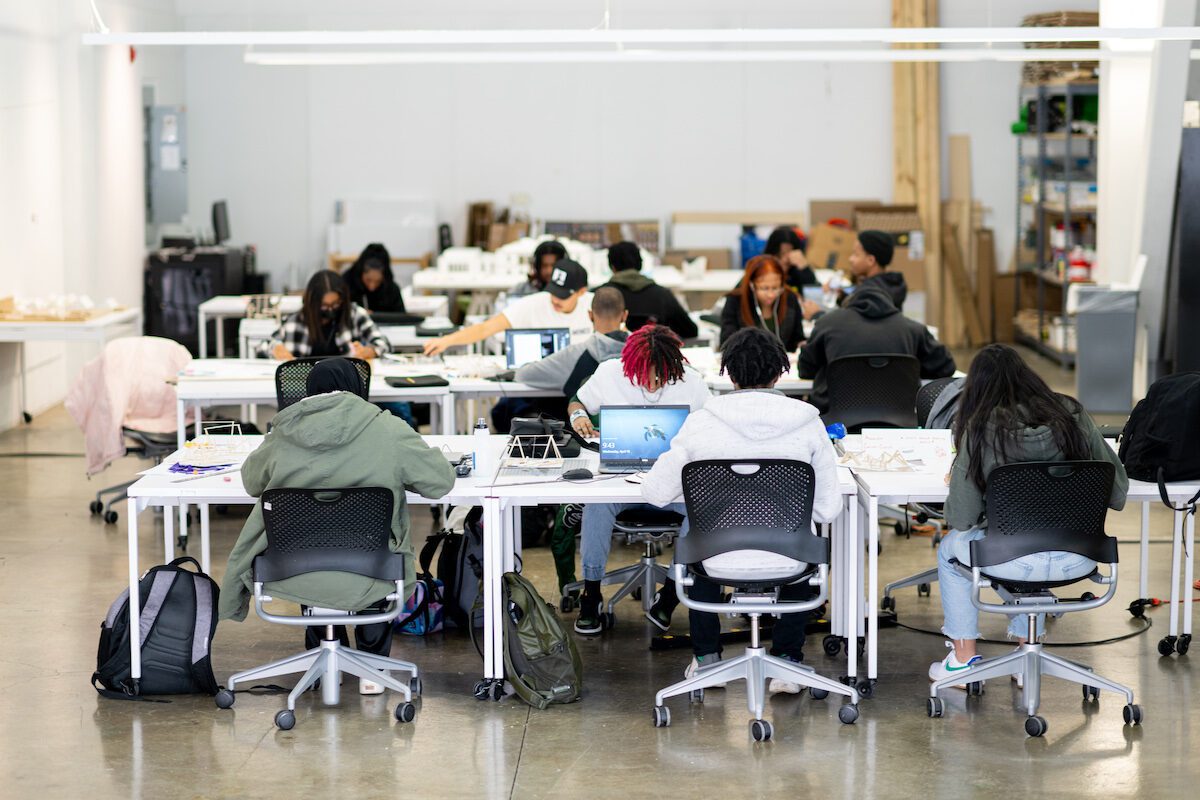
“We’re just beginning to see the program’s full circle benefits at work,” said ArcPrep co-director Salam Rida. “We’re now seeing students who were in the program as high schoolers seven years ago, students that went through a semester of ArcPrep and then as a result went to U-M’s Taubman College, and now they’re working full-time with architecture firms in Detroit.”
Last fall, 15 students spent the semester reimagining Detroit’s Fisher Body Plant No. 21, a long-abandoned Detroit factory, in partnership with an engineering educator from Cass Tech.
This semester, the students are working on a final project: “One room, one tower.” The students are reimagining affordable housing, increasing access to public green spaces and parks, and community ownership.
ArcPrep gives high school juniors challenges they wouldn’t typically find in a high school classroom.
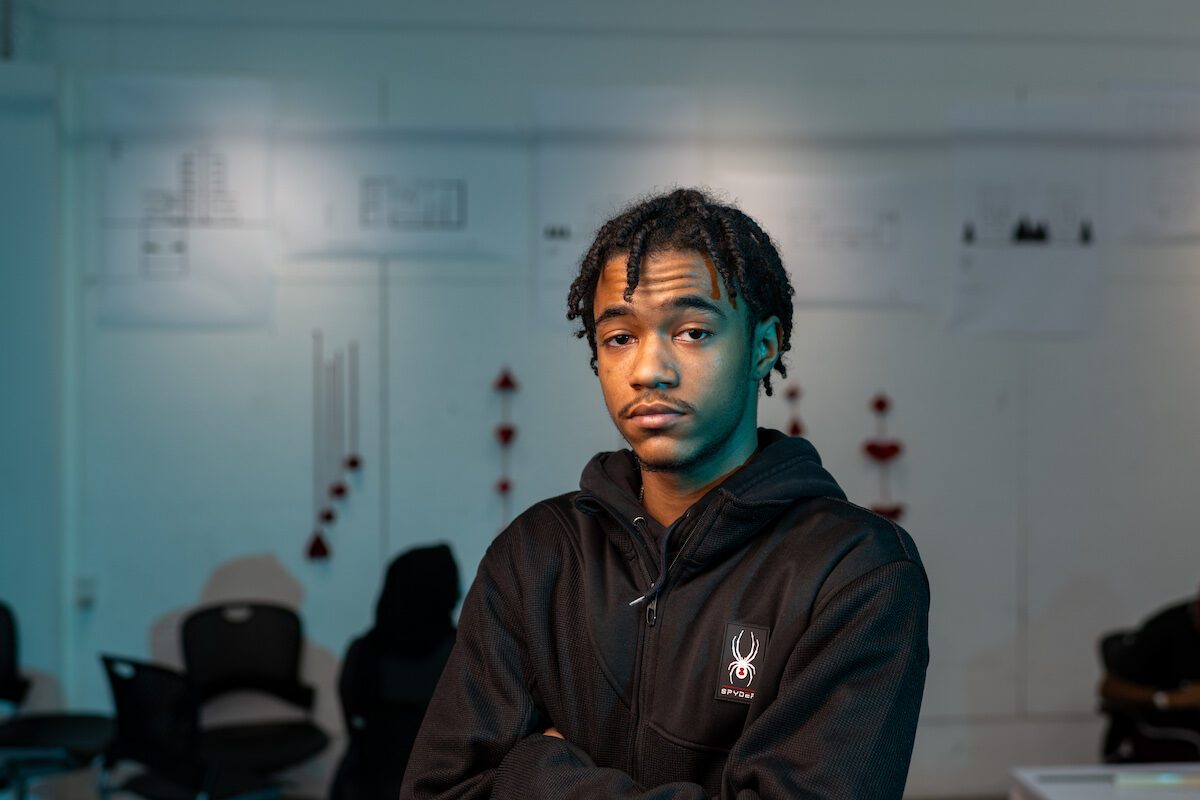
“We’re learning InDesign, Adobe and other cool programs that help us make architecture models,” Tye-Horn said.
ARTISTIC BEGINNINGS
Back in his studio, Hocking is discussing candidly his own humble beginnings—from growing up poor in Redford to a struggle with drugs and homelessness in his early 20s to his recent successes in his 40s with his exhibition “Retrograde,” a culmination of 25 years of work, at the Cranbrook Art Museum.

He tells the ArcPrep students of the work he’s been doing for the past quarter century, which mainly consists of art installations in abandoned Detroit buildings (creating pyramid sculptures with old bricks) and photography projects (photographing more than 500 abandoned boats all around Detroit).
“I wanted to change people’s perceptions of what Detroit used to be, of what these abandoned buildings used to be, and what could be,” he said.
One of the students perks up as he hears Hocking mention a neighborhood not far from where he lives now, while discussing Detroit as an “art site” for his life’s work and the importance of making things out of industrial waste.
“Just keep doing it, just keep making art no matter what people say or if you’ve had success. Just keep doing it,” Hocking tells the students.
Community artists like Hocking show the students the vast possibilities that exist in their own backyard. They start with design fundamentals. By the end of the semester, they move on to addressing big challenges, such as the future of Detroit’s cultural institutions, urban farming and public space design.
“ArcPrep was where I really understood what this discipline was. Like, what does it mean to be a building designer? To be a space designer?” Powell said. “ArcPrep is what really showed me how to move through this space, and this is how you really make yourself kind of known as a designer and as an architect.”
-Jessica Jenks, originally published by Michigan News






